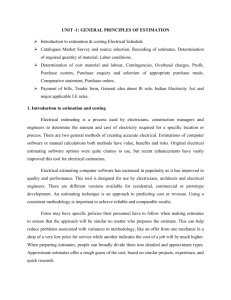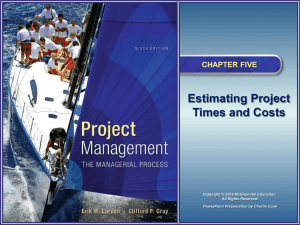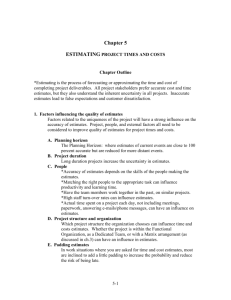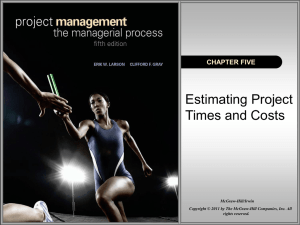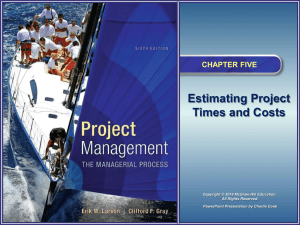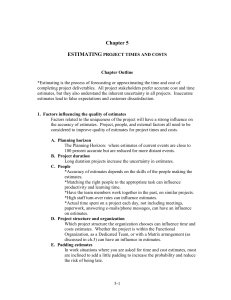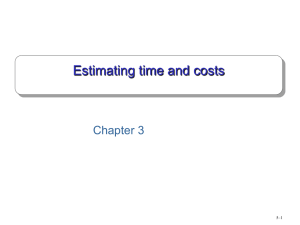Accurately Estimating Project Completion Times
advertisement
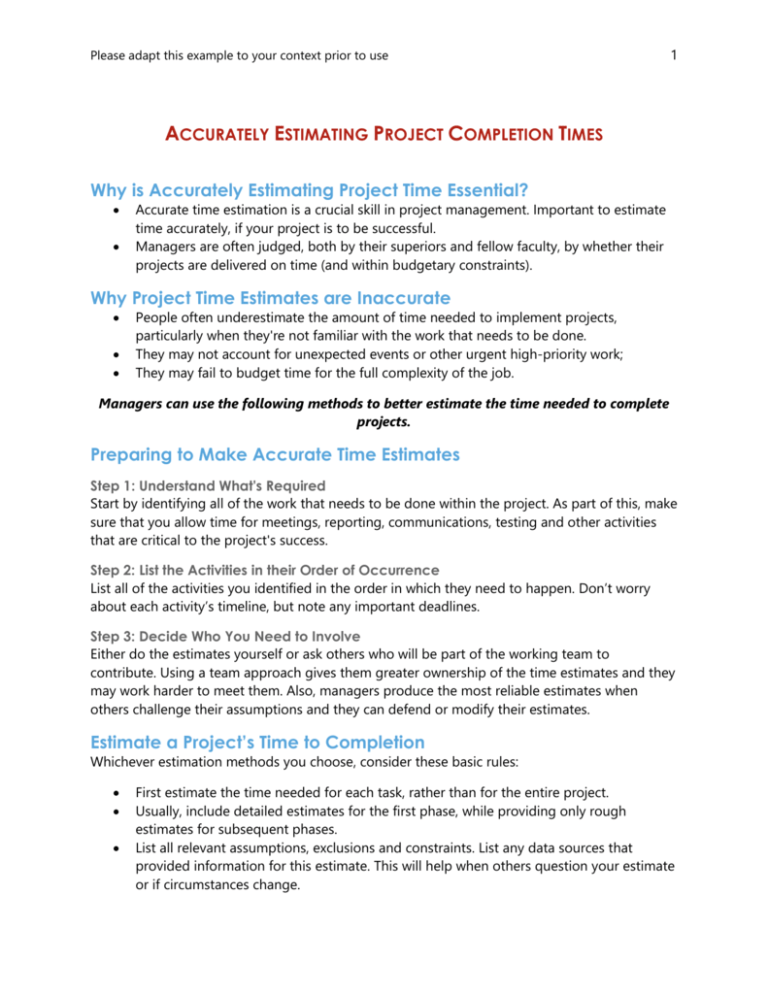
Please adapt this example to your context prior to use 1 ACCURATELY ESTIMATING PROJECT COMPLETION TIMES Why is Accurately Estimating Project Time Essential? Accurate time estimation is a crucial skill in project management. Important to estimate time accurately, if your project is to be successful. Managers are often judged, both by their superiors and fellow faculty, by whether their projects are delivered on time (and within budgetary constraints). Why Project Time Estimates are Inaccurate People often underestimate the amount of time needed to implement projects, particularly when they're not familiar with the work that needs to be done. They may not account for unexpected events or other urgent high-priority work; They may fail to budget time for the full complexity of the job. Managers can use the following methods to better estimate the time needed to complete projects. Preparing to Make Accurate Time Estimates Step 1: Understand What's Required Start by identifying all of the work that needs to be done within the project. As part of this, make sure that you allow time for meetings, reporting, communications, testing and other activities that are critical to the project's success. Step 2: List the Activities in their Order of Occurrence List all of the activities you identified in the order in which they need to happen. Don’t worry about each activity’s timeline, but note any important deadlines. Step 3: Decide Who You Need to Involve Either do the estimates yourself or ask others who will be part of the working team to contribute. Using a team approach gives them greater ownership of the time estimates and they may work harder to meet them. Also, managers produce the most reliable estimates when others challenge their assumptions and they can defend or modify their estimates. Estimate a Project’s Time to Completion Whichever estimation methods you choose, consider these basic rules: First estimate the time needed for each task, rather than for the entire project. Usually, include detailed estimates for the first phase, while providing only rough estimates for subsequent phases. List all relevant assumptions, exclusions and constraints. List any data sources that provided information for this estimate. This will help when others question your estimate or if circumstances change. Please adapt this example to your context prior to use 2 In making the time estimate, assume that: o Your resources will only be productive for 80 percent of the time. Part-time help may lose time and productivity as they switch between jobs. o Build in time for unexpected events, such as sickness, supply problems, equipment failure, accidents, emergencies, problem solving, and meetings. o Many people significantly underestimate the amount of time it will take for them to complete tasks. Methods for Estimating Time Several methods exist for estimating a project’s timeline. Often, the best approach is to use a mixture of these techniques. 1. Top-Down Estimations Develop an overview of the expected timeline using Comparative Estimating, which is looking at the time it took to do similar tasks on past projects. Then use Parametric Estimation, in which you estimate the time required for one deliverable (such as building one web page), and then multiplying it by the number of deliverables required (such as for the entire web site). This gives you an approximation of the total time the project will require. To check on the accuracy of this quick estimate, it is useful to spend more time to check it against a more detailed bottom-up estimate. 2. Bottom-Up Estimations Use this estimation method by breaking each of the larger project tasks into smaller tasks, and then estimate the time needed to complete each one. The more detailed your breakdown, the more accurate the final estimate. One way of doing this is to break the larger tasks into those that one person can do in a half day. You can then add up the total amount of time needed to complete the project. This project time estimate will probably be more accurate than a top-down analysis. Use the top-down estimates to challenge the validity of the bottom-up estimates, and to refine them as appropriate. Note, however, that this provides the person-days required for each task. The overall time for a project may be shorter if some tasks are completed simultaneously (see Gantt Chart). 3. Accuracy of Estimates Project time estimates are just that—an approximation. Initially, the abilities and availability of people needed to complete the project may be uncertain. To set reasonable expectations, based on a more realistic estimate of outcomes and to build in a cushion for uncertainty, do three estimates (Bracketing) - one for the best case, another for the worst case, and a final one for the most likely case. Visualizing the Project Timeline Once you've estimated the time needed for each task, prepare a project schedule. Please adapt this example to your context prior to use It often helps to lay the schedule out as a Gantt Chart to show the timeline and overlapping activities. Highlight any tasks critical to continuing the project and mark any deadlines within the project. 3

